Estadio Centenario
| Capacity | 60 235 |
|---|---|
| Country | Uruguay |
| City | Montevideo |
| Clubs | - |
| Inauguration | 18/07/1930 |
| Construction | 1929–1930 |
| Renovations | 1955, 1977, 1980, 2021 |
| Design | Juan Antonio Scasso |
Advertisement
Estadio Centenario – stadium description
What is the Estadio Centenario like in a nutshell?
Estadio Centenario was built between 1929 and 1930 for the first-ever football World Cup, which was held in July 1930 in Uruguay's capital, Montevideo. The facility was inaugurated on July 18, 1930, the exact centennial of the adoption of Uruguay's first constitution.
The stadium serves as the most important football venue in the country. The national team often plays there, and it is also used for club matches. The stadium has hosted major international events, and in 1983 FIFA gave it the status of a world football monument.
The facility has been modernized a number of times over the years, but to this day it has largely retained its original shape from 1930. One of its most distinctive features is its oval, almost circular silhouette and the tall tower to the east. Today the capacity of the stands is about 60,000 spectators. The stadium houses a museum of Uruguayan football.
One game is planned to be played at the Estadio Centenario during the 2030 World Cup, which is to be held at the very beginning of the tournament, in honor of the centennial of the World Cup. In preparation for the event, an expansion of the stadium is planned.
How did the Estadio Centenario come about?
On May 28, 1928, at the 17th FIFA Congress in Amsterdam, the decision was made to hold the first football World Cup. The competition was to be held in 1930, and five European countries as well as Uruguay entered the race to host it.
1930 marked the 100th anniversary of the adoption of Uruguay's first constitution, and the country had the added advantage of having its national football team win gold medals at the last two Olympic Games (1924 and 1928).
As all European countries eventually withdrew from the race, Uruguay remained the only candidate. On May 18, 1929, at the 18th FIFA Congress in Barcelona, the South American country was officially confirmed as the host of the first-ever World Cup.
Shortly after Uruguay was awarded the hosting of the tournament, preparations began in the country's capital, Montevideo, for the construction of a monumental stadium to be built for the event.
The city donated the land in the Parque de los Aliados (since 1930 under the name Parque José Batlle y Ordóñez) and the Comisión Administradora del Field Oficial (CAFO) was created, a body made up of representatives of the city authorities and the Uruguayan Football Federation (AUF), which took charge of carrying out the investment and still acts as the stadium's manager today.
How did the construction of Estadio Centenario proceed?
As early as July 21, 1929, the ceremonial laying of the founding stone for the new stadium took place. Ground work began in early August. A local architect, Juan Antonio Scasso, took charge of the project.
The original plan was to build a stadium for more than 100,000 spectators, but due to lack of sufficient funds and time, the plans were reduced to 70,000. The facility was designed in such a way that a large part of the stands would be supported by slopes.
During the first few months, mainly earthworks were carried out, with 160,000 cubic meters of soil being moved. In February 1930, reinforced concrete work began. Construction of the stadium required about 14 thousand cubic meters of concrete.
Construction work was carried out by a number of companies, and due to the tight schedule, a three-shift system was introduced so that work could continue all the time. Heavy rains proved to be a major obstacle. European immigrants, who were arriving in Uruguay in large numbers at the time, contributed significantly to the construction.
Initially, the plan was to play all the World Cup matches in the new stadium, but due to problems in completing the facility in time, the first matches of the World Cup, which began on July 13, 1930, were held in two nearby stadiums: Estadio Gran Parque Central and the now defunct Estadio Pocitos.
Work continued until the very last moment. Even the day before the inauguration, heaters were used to help the concrete floors dry.
How did the 1930 World Cup go at Estadio Centenario?
The first match of the World Cup at Estadio Centenario, which was also the inauguration of the new venue, took place on July 18, 1930. This was exactly on the 100th anniversary of the adoption of Uruguay's first constitution. The game was watched from the stands by less than 58,000 spectators, and the hosts won against the Peru 1-0, successfully beginning the tournament.
The remaining matches of the championship have already been held exclusively at the Estadio Centenario, including both semifinals and the grand final, played on July 30, 1930. The national teams of Uruguay and neighboring Argentina reached the final (both teams won their semifinal matches with a score of 6–1).
In the final it was 2–1 for Argentina until the break, but the hosts managed to tip the balance in the second half, eventually winning 4–2 and becoming the first world champions.
How was the Estadio Centenario expanded?
The Estadio Centenario still retains much of its original shape from 1930, but has undergone various upgrades over the years that have made some significant changes.
What were the biggest changes that took place at Estadio Centenario?
The most significant modifications to Estadio Centenario were the expansion of its stands. In 1955, in preparation for the 1956 Copa América, the stands behind the goals (Tribuna Colombes and Tribuna Amsterdam) were enlarged by an additional level, almost equaling in height the eastern Tribuna Olímpica.
In 1977, an additional tier was also added to the west, to the lowest Tribuna América. In the process, the lodges in this stand were also expanded, and a roof appeared over a section of it.
What smaller changes have taken place at Estadio Centenario?
Video screen
Prior to the Mundialito tournament, held in late 1980 and early 1981, further expansion of the Tribuna América was considered so that it would reach a similar height to the other stands, but these plans were ultimately not realized.
However, the stadium underwent a number of other upgrades during this time, including the introduction of an electronic scoreboard at Tribuna Colombes, replacing the manual one that was on the opposite side.
The electronic scoreboard was replaced with a new, more advanced one in the early 1990s. However, it was completely destroyed after the powerful hurricane passed through on August 23, 2005.
The plaque was not initially replaced due to lack of funds. Venezuelan President Hugo Chávez then came to the rescue, funding a modern screen for the Estadio Centenario. The new screen made its debut in late 2008. It was replaced by a new one during modernization work ahead of the 2021 Copa Libertadores and Copa Sudamericana finals.
Floodlights
The stadium received its first artificial lighting as early as 1932. In 1956, four towers with floodlights were erected on the América and Olímpica stands. In 1980, they were replaced by four light poles in the corners of the stadium. In 2021, they were equipped with new LED floodlights.
Changes to the lower levels of the stands
In 1977, concrete seats were built on the lowest level of the stands along the pitch (América and Olímpica). In the 1990s, metal fences were erected behind the goals due to the hooligan excesses. Later, for safety reasons, the lowest level of the stands behind the goals was completely taken out of use.
What are the characteristics of Estadio Centenario?
Opened in 1930, Estadio Centenario is a football-specific facility. The stadium is characterized by an oval (almost circular) form and has a distinctive tall tower on the east. With a capacity of about 60,000 spectators, it is the largest stadium in Uruguay.
What do the stands of the Estadio Centenario look like?
The monumental Estadio Centenario was given an original composition of the stands, which were built on the plan of an oval, or rather a slightly flattened circle. The lowest was the stand in the west, which received one level. The auditorium behind the goals was given two levels, and the highest eastern stand had three levels. The curved stands were meant to refer to ancient Greek theaters.
The oval shape of the stands suggests the existence of an athletics track, but this was not the case with Estadio Centenario. The facility was envisioned from the beginning as a football stadium, and the empty spaces between the concrete stands and the pitch were filled with gentle slopes that provided an additional, lowest level of the audience.
Later changes meant that today the stands behind the goals are almost the same height as the eastern stand. The lowest stand in the west also grew, receiving a second floor and – as the only one in the entire stadium – a small patch of roofing. However, the installation of individual seats resulted in a decrease in the venue's capacity.
The lowest parts of the auditorium behind the goals are now out of use for safety reasons. The current capacity of the stadium is just over 60,000 spectators. The facility is equipped with floodlights and a video screen (on the northern curve), among other things. Boxes and press seats are located on the west side (Tribuna América).
What are the names of the stands at Estadio Centenario?
The stands are clearly divided into four segments, each with its own name: América (west), Colombes (north), Olímpica (east) and Amsterdam (south). The names refer to the first great successes of Uruguay's national football team.
Tribuna América is a tribute to La Celeste's triumphs in the Copa América, and Tribuna Olímpica refers to victories at the Olympic Games (1924 and 1928). Colombes and Amsterdam are the names of the places where Uruguayan footballers won Olympic gold medals.
What are the characteristics of the tower at Estadio Centenario?
The stadium's signature feature is the so-called Torre de los Homenajes, a tall, expressionistic tower that dominates over the eastern stand. It was inspired by a similar tower that the architect of Estadio Centenario saw at the Olympic Stadium in Amsterdam.
Torre de los Homenajes has been embellished with motifs that describe the local context: the nine levels of balconies allude to the nine stripes on the Uruguayan flag, while the airplane wings and ship's prow at the base of the tower refer to the influx of European immigrants into the country. The tower is topped with a mast on which the Uruguayan flag flies.
The tower has an elevator that takes you almost to the top, where there is a viewing platform.
What is located in the premises under the stands of the Estadio Centenario?
In addition to the necessary facilities, the rooms under the stands also house a police station (Tribuna Colombes) and an elementary school (Tribuna Olímpica).
What can be seen at the Uruguayan football museum?
Inside the Tribuna Olímpica there is also a museum of Uruguayan football. Inaugurated on December 15, 1975 and modernized in 2004, the museum covers about 3,000 sq. m. on two floors. It houses many valuable exhibits documenting the history of Uruguayan football, including trophies won by the national team. While visiting the museum, you can also see the 1929 foundation stone for the construction of the Estadio Centenario.
What does the name Estadio Centenario refer to?
The name Estadio Centenario (Centennial Stadium) refers to the 100th anniversary of the adoption of Uruguay's first constitution. The facility was inaugurated on July 18, 1930, exactly one hundred years after that event.
Where is the Estadio Centenario located?
The stadium is located in a park (Parque José Batlle y Ordóñez), which is situated amidst the dense housing of Montevideo, about 4 km east of the Estación Central. The park is also home to two other, much smaller football stadiums (Estadio Parque Palermo and Estadio Parque Luis Méndez Piana), an athletics facility (Pista de Atletismo Darwin Piñeyrúa) and a cycling track (Velódromo Municipal Atilio François).
Relatively close to Estadio Centenario, about a kilometer to the north, stands another large football stadium, Estadio Gran Parque Central, owned by Club Nacional de Football.
What events are held at Estadio Centenario?
In addition to the 1930 World Cup, Estadio Centenario also hosted matches (usually including finals) of the Copa América in 1942, 1956, 1967 and 1995, as well as the 1980-1981 Mundialito and the South American Under-20 (1979, 2003) and Under-17 (1999) championships. Of the international club competitions, the Copa Libertadores final matches or Intercontinental Cup fixtures should be mentioned above all.
Interestingly, in all the major events involving national teams that took place at Estadio Centenario (1930 World Cup, four Copa América tournaments), the Uruguayan national team triumphed.
As the largest stadium in the country, the venue serves as the de facto national stadium. Usually the Uruguayan national team plays here, in addition, the facility is used for national competitions by various clubs, including that until the new Estadio Campeón del Siglo opened in 2016, the award-winning Club Atlético Peñarol regularly played at Estadio Centenario.
The stadium is also the site of many other events. Large concerts are often held there, and artists such as Rod Stewart, Eric Clapton, Sting, Roxette, Joe Cocker, Ricky Martin, Enrique Iglesias, Bryan Adams, Guns N' Roses, Aerosmith, The Rolling Stones, Marc Anthony, One Direction, Paul McCartney, Ed Sheeran and Maroon 5 have already performed there. On May 7, 1988, Pope John Paul II celebrated Mass at Estadio Centenario.
Until 1977, a sports hall was located under the Tribuna Olímpica. In 1940 and 1953, South American championship games were played there. The hall also hosted boxing galas.
What is the significance of the Estadio Centenario?
The stadium plays an extremely important role for Uruguayan football, but its fame and importance go much higher. Because of its frequent hosting of important international competitions, the venue is one of the most recognizable stadiums in South America, known among football fans around the world.
The stadium occupies a special place in the history of world football especially due to the hosting of the first World Cup in 1930. On July 18, 1983, FIFA granted it the status of Historical Monument of World Football. It is the only stadium in the world to be honored in this way.
The creation of the stadium was also influential in cementing the national identity of the Uruguayan people.
What will be the future of Estadio Centenario?
The next big event planned for the Estadio Centenario is expected to be the 2030 World Cup, although the tournament will be held mainly in Spain, Portugal and Morocco, with only one game to be played in Montevideo at the start of the championship, in commemoration of the centennial of the World Cup. One match each will also be held in Argentina and Paraguay.
A major upgrade of Estadio Centenario is planned in preparation for the World Cup. The Tribuna América is to be expanded to reach a similar height to the other stands. In addition, much of the auditorium is to be covered. However, the facility will retain its existing character, including the recognizable tower on the east side.
During the modernization, the stadium will be upgraded and equipped with the latest technologies, and the capacity will increase to 63,000 spectators. The expansion will not only allow the stadium to host a match during the 2030 World Cup, but will also bring the facility up to modern standards and preserve its status as the country's most important football stadium for decades to come.
The work is expected to begin in late 2025 or early 2026 and will take 30-32 months to complete, with the facility to be taken out of service during that time.
The Estadio Centenario modernization project can be seen on a separate subpage
Advertisement
Pictures
-
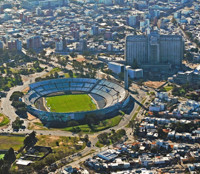
03.08.2019 © Sebastián Laguna (CC BY 2.0) 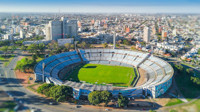
30.06.2017 © Marcelo Campi (CC BY-SA 2.0) 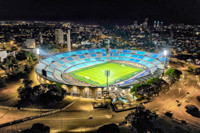
21.11.2021 © Marcelo Campi (CC BY-SA 2.0) 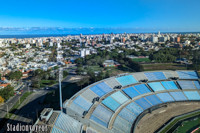
02.05.2023 © Stadionvoyeur 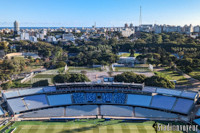
02.05.2023 © Stadionvoyeur 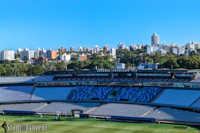
02.05.2023 © Stadionvoyeur 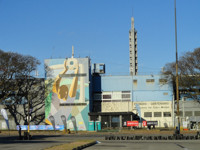
04.11.2017 © NaBUru38 (CC BY-SA 4.0) 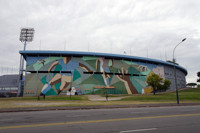
19.04.2017 © Alacoolwiki (CC BY-SA 4.0) 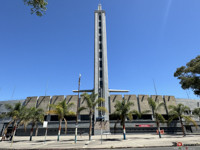
07.03.2024 © RAsenReisen 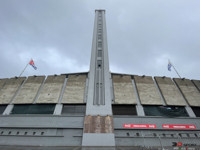
20.06.2023 © RAsenReisen 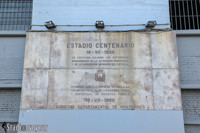
02.05.2023 © Stadionvoyeur 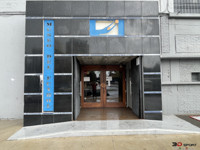
20.06.2023 © RAsenReisen 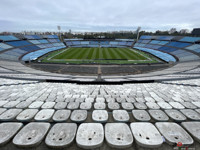
20.06.2023 © RAsenReisen 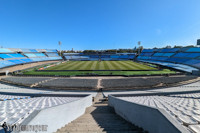
02.05.2023 © Stadionvoyeur 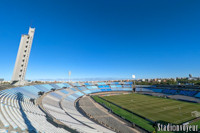
02.05.2023 © Stadionvoyeur 
07.03.2024 © RAsenReisen 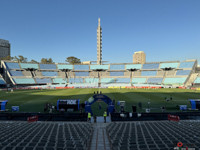
07.03.2024 © RAsenReisen 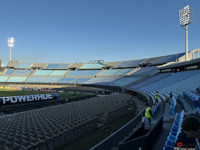
07.03.2024 © RAsenReisen 
20.06.2023 © RAsenReisen 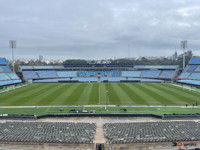
20.06.2023 © RAsenReisen 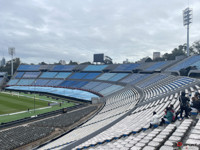
20.06.2023 © RAsenReisen 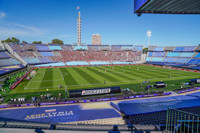
20.11.2021 © Intendencia de Montevideo (CC BY-SA 4.0) 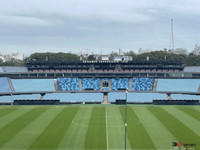
20.06.2023 © RAsenReisen 
20.06.2023 © RAsenReisen 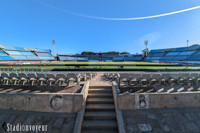
02.05.2023 © Stadionvoyeur 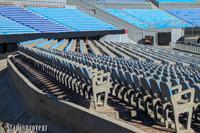
02.05.2023 © Stadionvoyeur 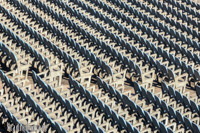
02.05.2023 © Stadionvoyeur 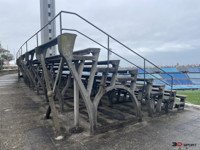
20.06.2023 © RAsenReisen 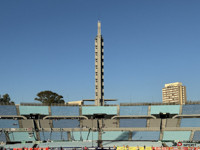
07.03.2024 © RAsenReisen 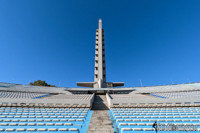
02.05.2023 © Stadionvoyeur 
02.05.2023 © Stadionvoyeur 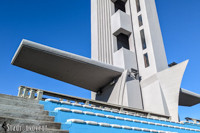
02.05.2023 © Stadionvoyeur 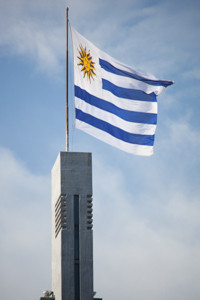
02.06.2012 © Jimmy Baikovicius (CC BY-SA 2.0) 
02.05.2023 © Stadionvoyeur 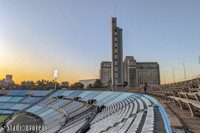
02.05.2023 © Stadionvoyeur 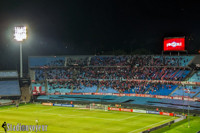
02.05.2023 © Stadionvoyeur 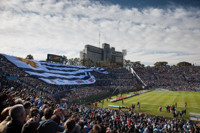
02.06.2012 © Jimmy Baikovicius (CC BY-SA 2.0) 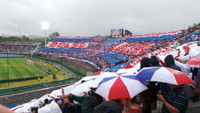
15.12.2019 © Fedebolso (CC BY-SA 4.0) 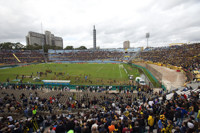
04.04.2010 © Jimmy Baikovicius (CC BY-SA 2.0) 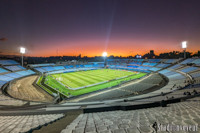
02.05.2023 © Stadionvoyeur 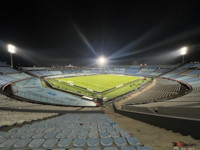
20.06.2023 © RAsenReisen 
20.06.2023 © RAsenReisen 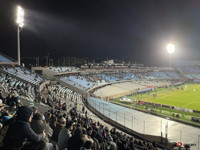
20.06.2023 © RAsenReisen 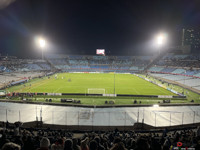
20.06.2023 © RAsenReisen 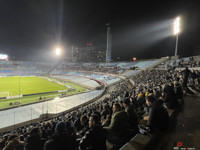
20.06.2023 © RAsenReisen 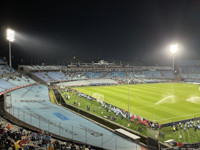
20.06.2023 © RAsenReisen 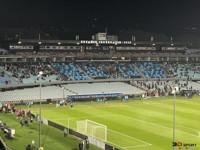
20.06.2023 © RAsenReisen 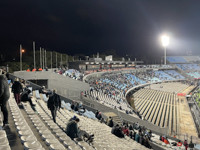
20.06.2023 © RAsenReisen 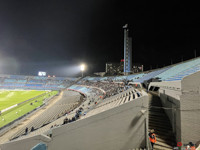
20.06.2023 © RAsenReisen 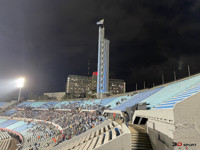
20.06.2023 © RAsenReisen 
20.06.2023 © RAsenReisen 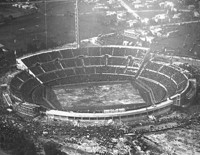
1930 © 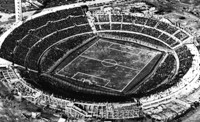
1930 ©
1930:
Related news
2025
-
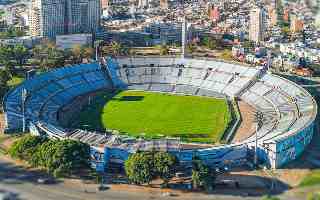
World: Montevideo favourite to host the Finalissima, but competition is fierce
In March 2026, the next edition of the Finalissima – the prestigious clash between the Copa América and European champions – will take place. This time it’s Argentina versus Spain, two of today’s football powerhouses.
-
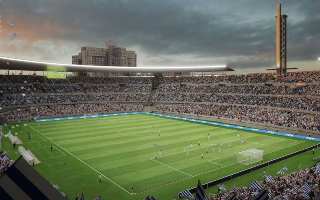
WC 2030: Uruguay and Estadio Centenario prepare for tournament
The Uruguayan Football Federation (AUF) and the authorities in Montevideo have been working for some time with the year 2030 in mind. However, it is not the only number they are focused on. There is another figure that represents the most complicated aspect of the stadium project for the World Cup: $160 million.
2024
-

FIFA: World Cup 2030 stadium evaluation. Camp Nou in the lead
Of the 23 stadiums to host the 2030 World Cup matches, as many as 14 either exist only on paper or will undergo deep redevelopment before the tournament. Nevertheless, FIFA has evaluated each of them before the Extraordinary Congress, which will already make its final decision on December 11. Also the one about the final arena.
-
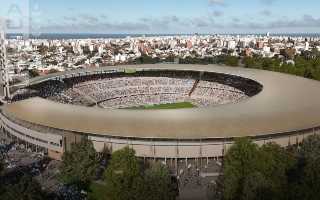
WC 2030: Uruguay prepares for World Cup. First renderings
The Uruguayan Football Association (AUF) has unveiled the first visualizations of the Estadio Centenario renovation, where matches for the 2030 World Cup will be held. The historic venue will increase its capacity to 63,000 spectators, and most of the stands will be covered with a roof.
-

World Cup 2030: The race for the final (and more) enters decisive phase
Recent weeks have been tumultuous for the candidate cities, but the next few weeks will be a real storm. Of the 14 Spanish arenas aspiring to host the World Cup, only 11 will be chosen. Bernabéu, Camp Nou and Grand Stade de Casablanca are vying to host the finals, although the Moroccan megastadion exists only on paper for now.
2023
-

World Cup 2030: A historic celebration across three continents
In a groundbreaking decision, FIFA announces the 2030 World Cup will be hosted across three continents, marking a centenary celebration of the tournament.
-

World Cup 2030: Stadium for the final unveiled by Uruguay
The battle for the right to host the 2030 FIFA World Cup is gathering pace. Uruguay has a huge appetite for the opportunity to host the tournament. The country's government has just unveiled the plans for modernisation of the first venue in its bid.
2020
-

Uruguay: The grand plan for Centenario
It may be one of the world's most famous football temples but it's almost a century old. That's why Uruguay is looking at reinventing the legendary Centenario in time for its centenary.
-

COVID-19 crisis: Stadiums shelter the homeless
While in many countries living on the street leaves people with nowhere to self-isolate, some cases from Latin America – particularly in Brazil – could prove inspiring for strategies in other countries.

 StadiumDB
StadiumDB
